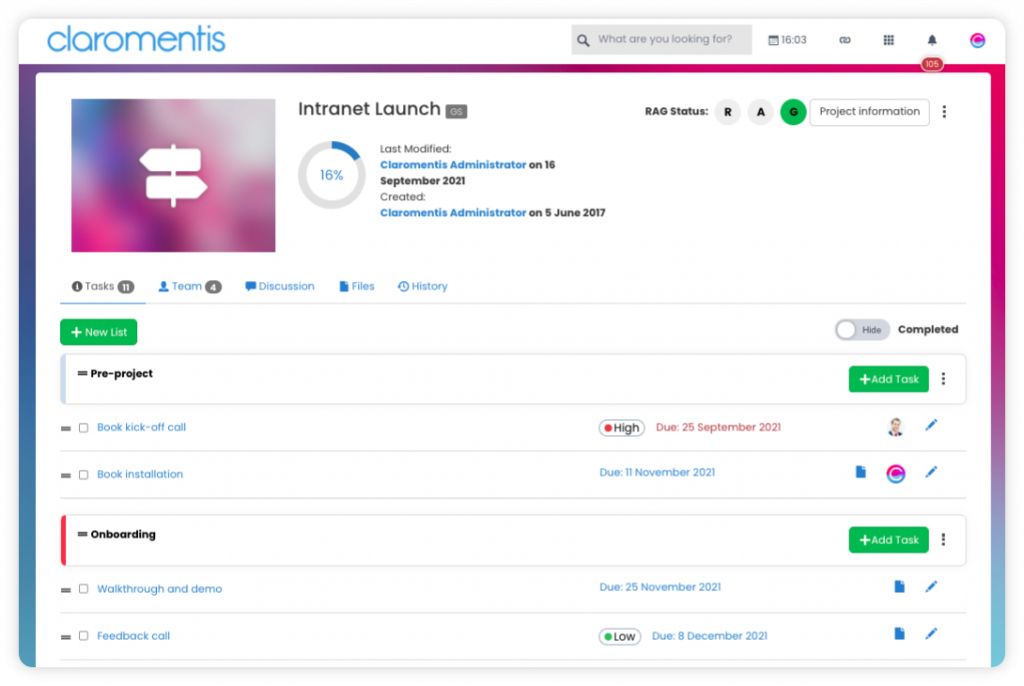What do the core principles of project management and author Daniel Pink have in common?
Quite a lot actually. That’s because in his best-seller, “Drive: The Surprising Truth About What Motivates Us”, Pink’s idea that we turn our preconceived notions about motivation on their head could easily be applied to managing projects as well.
At the core of his concept of motivation is “The Four Ts”, which is the autonomy over the Task, Time, a Team and a Technique. Taking this autonomy away has significant consequences because, as Pink argues, it erodes a highly valuable asset: intrinsic motivation. So, in Pink’s opinion, to achieve maximum motivation in the twenty-first century, people must have autonomy over their tasks. But how is this achieved?
Well, it isn’t by dangling a carrot in front of people’s faces, nor is it by threatening punishments and sanctions. The harm of incentives and disincentives has already been demonstrated to outweigh the good.
Why a poor project planning phase is the greatest demotivator
There is no nastier or more misused disincentive in the arsenal of a manager than bad project planning. Too often, employees suffer at the hands of an unrealistic schedule; and bad schedules create bad social contracts. No-one can be motivated by a project management plan in which they have no belief or even any ownership, and project teams often have to take toxic measures to meet unrealistic schedules, which is absolutely counterproductive. Yet, as obvious as these things are, the bad practices don’t go away.
This is the enduring crisis in the basic principles of project management. Outdated, conventional project management is unrealistic, incomplete, antisocial and utterly un-motivating. When it is applied, it stifles productivity and innovation in companies, and limits team members’ achievements. Nevertheless, management and their teams remain locked in a stalemate if they get stuck in the old ways.
This is where cloud based social project management software comes in. It facilitates the growing effort to fix the issues of traditional management, standing on the significant shoulders of pioneers of social design; those who drove innovation for platforms like Twitter, Facebook and Wikipedia. These people are shedding light on the fact that the core principles of project management
can be made more efficient and effective by making it more fun.
5 core principles of project management
In order to transform old, outdated standards in favour of practices that will result in a successful project, you need to pursue entirely new principles and fresh ways of thinking. Here are the fundamental principles that can help boost your project goals and objectives by improving the management’s capacity to motivate teams:
1. Collaboration and projects cannot be separated
A project is the means by which an organisation gets things done. Every project is the embodiment of aims, objectives, deliverables, plans, resources, purpose, and promises. Any conversation and content that is unrelated to projects amounts to nothing more than entertainment (which is great for building company culture; not so great for making project progress).
Social features by themselves, disconnected from projects, have no structure and lack direction. Therefore, it’s vital that collaboration is intertwined with project management, so that your teams can reach those defining milestones on time and in budget.
2. Project teams should see the value they bring
Conventional project management creates real value for management, but not necessarily for their team members, which can lead to disengagement.
Every team member should feel valued and recognise the part they play in a project’s success, so that they are engaged, motivated, and invested in the results. Social project management software makes it easy to measure success, providing teams with complete visibility of their achievements.

Social project management software gives total visibility of team members’ achievements
3. Encourage maximum transparency
Your team is full of smart people with a range of skill sets, so you waste their talents by limiting their opportunities to connect and communicate ideas. Their focus becomes too narrow, and their motivation and productivity suffer. Through transparency, you will create more motivation, greater engagement and, ultimately, maximum innovation.
Digital workplace solutions are the best way to achieve this, as it helps people stay connected. There is no need to stop at team members; collaboration and transparency can be extended to clients, contractors, partners, and stakeholders to enhance the results.
4. Gives teams autonomy and accountability
Team members will benefit greatly from autonomy. Give them as much ownership as possible over data, estimates, and creativity, and consider involving them in the risk management process too.
Then, aggregate information intelligently for managers. Have faith in people to make smart contributions, but maintain a public audit trail for tracking progress to ensure there is accountability.
5. Estimate and schedule projects realistically
Honesty and integrity are the cornerstones of organisational character. But rigid and unrealistic scheduling can erode these aspects at a great cost to the company.
A realistic schedule has to acknowledge the realities of balancing workloads, making justifiable promises, and encountering uncertainty. A good project scheduling tool will help resolve the issue, allowing you to create logical estimates that are based on your team’s knowledge and experience.
Summary
With economic and political challenges profoundly affecting the modern climate, now is the perfect opportunity to remodel the way we function around the core principle of self-direction. Going back to Daniel Pink, he speaks of a “Results Only Work Environment”; a future we could all benefit from. The change towards this can be accelerated through the insistence that project management tools are evolved to fit the way we do our work, rather than the other way around.

![[FREE GUIDE] How to Improve Your Project Management Processes in 5 Steps](https://no-cache.hubspot.com/cta/default/5025095/39f7568f-5072-4c75-b782-89ea84fe2a87.png)




